Xipha Zephyr
The 5 Relations
A Relational Values Framework for Living a Good Life
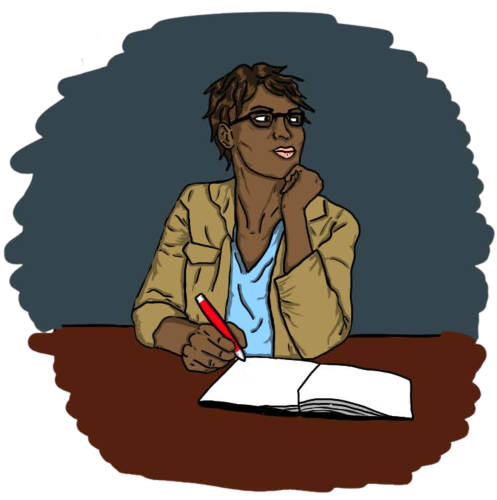
How and why did this framework emerge?
The 4th Relation: Sustainability
What is this about?
In some ways, this is about my own journey and sharing discoveries I’ve made along the way. I went through a period of rebuilding, and of healing old wounds that had been bleeding a long time. During this period, I tested myself to question everything I knew, or at least assumed I knew.
What emerged is a foundational philosophy, though not necessarily original, as I’ve drawn from the thoughts of many others in fields from psychology to anthropology to quantum physics. I don’t claim any special understanding of things beyond myself, but through examining myself, I discovered a way of thinking about the world that I enjoyed, a way of trying to live as someone I liked and believed was a good person.
I will share with you my thinking in developing this philosophy, the basic underlying principles, and how I apply it to my own life. It has become the foundation for my identity, my work, and my life and informs how I interact with the world and how I show up for myself and in relationships with others.
How and why did this framework emerge?
At the core of this way of thinking is the concept of the internal self in relation to the external environment. In particular, it asks how this self is balanced with the sum of all life, the world, the universe, and the wonderful, terrible existence of all things within space and time, from beginning to end.
I realized I must be who I am or die trying.
But who did I want to be? How did I want to show up in the world for myself, for the people I cared about, for the world itself? What did I want to add or contribute to the sum of existence, to the story of humanity? What did I want to experience in this blink of life I’ve been gifted? Why do I matter? Why does anyone matter?
In a twist of words, all of us who exist in the physical realm are made of matter. But there are also the realms of energy, of particles and quarks and quantum fields bouncing off each other in a chaotic dance. I like to imagine that outside of space and time is not nothing, but an infinite state of balance and sameness with no point of reference or differentiation to define the existence of anything. Sometimes probability changes the states of the quantum fields but the tension between them pulls them back to equilibrium. Like the flickering of static on a TV, bursting with potential for vibrant images but ultimately a meaningless display.
In order for something to be part of the observable universe, it must, by definition, be observable, even indirectly. There must be a way to differentiate it from its surroundings for it to exist as a distinct entity. So I imagine the universe coming into existence by observing itself at the speed of light, cascading into a point of reference that expanded into time and space with a bang. In all that massive context, the universal dance of galaxies and quarks, who am I?
One pattern seen over again in the nature of the universe is fractal organization. Things repeat at various scales in many systems: the branches of trees, the arteries and capillaries of a circulatory system, the social structures of our communities. There is a naturally occurring fractal theme throughout everything.
In the same way, there is a fractality to the relations I have with myself, others, and the universe.
This was the conceptual birth of the Five Relations, and the reflective framework by which I make sense of the world and my place in it. I hope by sharing it with you that it may enhance your own existence as it has mine.
The Relational Framework
The 1st Relation: Autonomy

This relation is about the establishment of self-identity and direction. At the center of everything each of us thinks or does is our core essence. Each individual possesses a conscious mind and distinct will, inhabiting a physical body that is unique in its position within space and time, and a spiritual connection with its own inner landscapes of imagination, experience, and emotion.
The first relation defines who I am to myself. I am a distinct being, differentiated from any other being. My mind, body, and spirit belong to no one else, and my experiences in life are a reflection of the exercise of my own will and its interactions with the world around me. The inner landscapes of my autonomous self are the only realm solely subject to my own dreams, desires, fears, and foibles. I am the only one qualified to define who I am and how I feel.
I also bear a responsibility to myself, to care for the body I inhabit, my mental well-being, and my spiritual connection with my core essence to the best of my ability. Caring for myself directly influences the quality of my life experience, and no one else can take primary responsibility for this care. Knowing who I am – my values, needs, wants, and limitations – is crucial to forming a healthy and autonomous self within my being.
Knowing myself is the first relation, and the only one that will be with me every moment for the entirety of my experience of life. This relation forms the center of every decision and action I take as an autonomous being.
The 2nd Relation: Equality
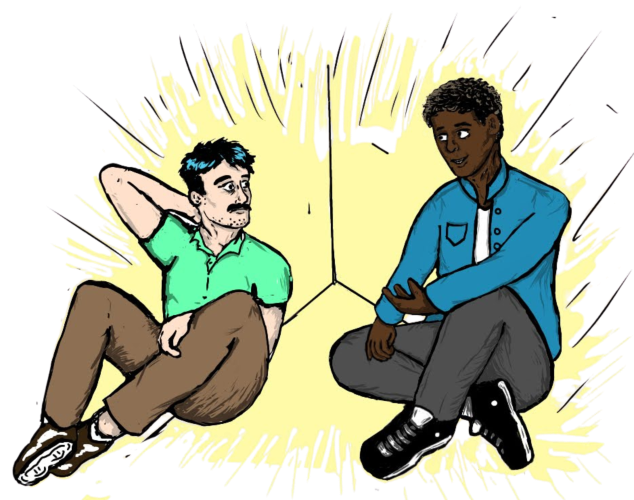
Following the first relation, each of us is an autonomous being with independent will — our own bodies, minds, and spirits. We also co-exist within a shared external context. The way you and I relate to each other as autonomous individuals in shared space and time is the second relation.
If each of us is an autonomous being, then whenever we interact – physically, mentally, or spiritually – we form a relation. If either being exerts force or domination over the other, they interfere with that being’s first relation. They are subjecting another’s autonomy to their will and violating the integrity of that person’s internal self, disrupting the first relation of another.
When these violations occur, they empower the experience of one being at the expense of diminishing another.
So how do we share space in proximity without subjecting others or being subjected ourselves? This is where the relation of equality guides us. If we recognize other beings as inherently equal in existence to ourselves, we can interact in a way that mutually respects each being’s first relation.
The second relation defines a responsibility to refrain from violating another’s autonomy, and to only engage in interaction when mutual consent is present. It includes a responsibility to care for the other’s well-being – physical, mental, and spiritual – up to the point that doing so would interfere with our own self-care and first relation.
When you and I are in mutual second relation, we are responsible not just to ourselves but to each other, to the best of our abilities.
The 3rd Relation: Community
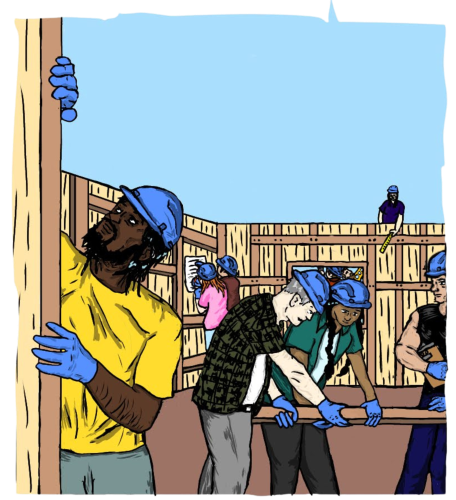
Building from the second relation, you and I exist not just in relation to each other, but also within a broader community of autonomous equals. We all share a common physical realm in which we must meet our material needs. We also contribute to a shared mental and spiritual landscape that shapes all our experiences. Even when not in direct second relation, our actions can affect others around us.
The third relation is about finding balance in equality — in how we care for ourselves, those we interact with directly, and those who are indirectly impacted by our choices. Through this balance, the third relation gives us a way of being in physical, mental, and spiritual harmony with others, so we don’t violate their first or second relations, or their ability to meet their own needs and responsibilities.
The third relation defines a shared community landscape. We all contribute to, and we all receive from this landscape. Our needs and capacities will shape our interactions as individuals with this landscape. Each of our relations with this landscape are equal in weight though they may have differences in form. Through this communal care, we enhance each individual’s ability to live well and support others.
Importantly, the third relation deepens the meaning of equality. In community, individuals are not only equals to each other — they are equals to the community as a whole. No one individual can dominate the community without violating others’ relations. And the community cannot dominate any individual without harming their first relation of autonomy. The balance of equality extends to the entire community. The relation we have with our self is equally important to the relation between the community and the self.
The third relation grounds us in our communities as equals and individuals who share interaction with a common landscape.
The 4th Relation: Sustainability
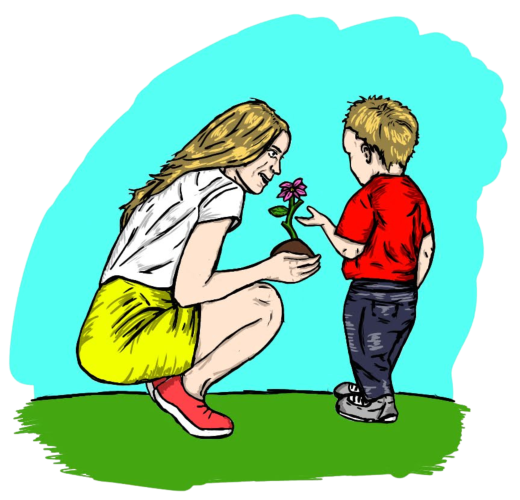
From autonomous equals in shared space comes a relation that spans not just space, but time. Life is cyclical: growth and decline are natural patterns. We aren’t born mature; we grow into our first relation. Through that, we gain the capacity to form well developed second and third relations.
Our communities are shaped by generations. The choices and values of our ancestors formed the world we inherit today, and our present actions will shape the landscape and its relational capacity to sustain future generations. The balance of equality extends into this temporal relation. The past, present, and future are equal in importance — none take precedence over the others.
The fourth relation defines our responsibility across time — to sustain the physical, mental, and spiritual well-being of generations before and after us. We must learn from and care for our elders, whose ability to care for themselves may wane even as their wisdom grows. We must also teach and care for children, helping them grow into autonomous beings capable of relating to themselves, others, and community.
This responsibility is not limited to those we are biologically related to. Elders and children are equals in community, and our responsibility is to support the well-being of all. We each pass through these stages. What we give to this relation will be reflected in how we are sustained in turn.
The fourth relation anchors us in our place in time. It helps us draw on the past, live fully in the present, and nurture the future.
The 5th Relation: Stewardry
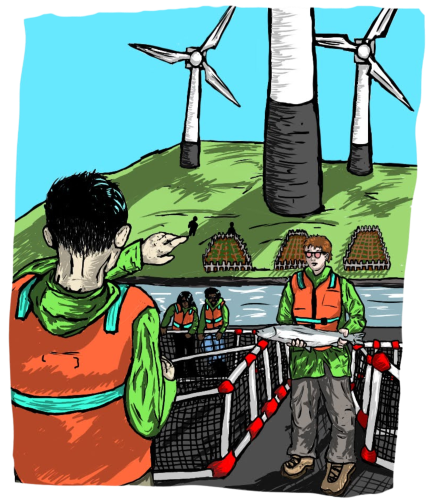
All of our existence depends on an external environment of space and time that we do not create and cannot control. This environment predates us and will remain long after we are gone. We rely on its resources for our survival and well-being. Our relation with it must include care — for the physical world, for the mental landscapes we create within it, and for the spiritual relationship we hold with life itself.
The fifth relation defines who we are in the vast ecosystem of existence. The rock and water of this planetary body hurtling through space gave birth to all known life, and is forever shaped by our interactions. The balance of equality applies here, too. We have a right to use what we need to survive and fulfill the first four relations. But we also have a responsibility — to repair the damage caused by past generations, to use resources sustainably in the present, to steward the land for future generations.
This relation applies to individuals and communities alike. Violating the fifth relation harms others. It limits their ability to meet their needs, breeds violent competition, and drives domination over people, resources and property. When these conditions exist, the damage reverberates — autonomy is violated, equality is lost, communities are destabilized, connections with our history are broken, and future generations are imperiled.
The fifth relation reminds us that care for the land is a shared responsibility. The well-being of the individual and the well-being of the land are inseparable. This truth holds for all beings, for communities, for generations, and for the whole of existence.
How Are These Relations Practiced?
While these ideas may seem abstract, they serve as a guide for action. As autonomous beings, we can align our will with these relations. This helps us live with integrity in a way that feels right and full of meaning as we explore and get to know our inner landscapes to express our most authentic selves.
We can reflect on our closest relationships, seeking balance and connection rooted in equality. An equal relation will be free of domination, coercion or control and allow each being to express their own authentic needs and decisions.
We can examine the power dynamics in our communities and correct harmful patterns, especially those that violate others’ autonomy. Healthy communities have no need to enforce the will of some members onto others and actively work to maintain equality for all.
We can honor the stories of our ancestors, and plan with hope for the children of tomorrow. When we learn from the past and plan for the future we create a sustainable present. The cycle of life will continue with each of us giving and receiving care throughout its phases.
We can form living relationships with the land — learning its needs, healing its wounds, and allowing it to sustain us in turn. By deepening our understanding of this relation we can identify our impacts and the needs of the land itself so that it may continue to provide the resources for life.
In my own life, whenever I make decisions – big or small – I use this framework. I consider the potential impact to each relation, and aim to align my actions with their balance. I pay close attention to any harm I may cause and take responsibility where I can. When I feel guilt or shame – or struggle with any other difficult emotion – I check those feelings against the relational framework for misalignments or violations, whether from my own actions or those of others. This tells me where I might need to make a change in my life or how I need to grow in my own development.
By doing this, I can be my full, authentic self. I can exist in harmony with the relations and the universe. I can enjoy my life and believe in myself, without compromising who I am or molding to the expectations of others. I can form deep, mutual connections while still knowing my own boundaries and respecting the boundaries of others. I can give to my community and receive support in return, staying mindful of the ripple effects of my actions. I can care for myself while also supporting those less able to care for themselves. I can model these values for all children I meet, regardless of biological relation, helping them grow into full beings who can live in alignment with the relations and carry their generational responsibilities into the future. And I can build a reciprocal relationship with the land — taking what I need, giving back what I can — and ensuring I do not harm others’ ability to meet their needs.
A Relational Reflection
I am me – and I am also we.
I am part of the story of the past, shaping the future.
I am one with all of existence, an equal among all things.
I am a unique pinpoint of being in the vastness of time and space
– just as you are, and every being that has ever existed, or ever will.
With love and life — Xipha Zephyr Image credits: Goose
